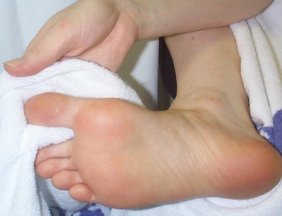My feet and diabetes – a pictorial guide
ADVICE FOR PEOPLE WITH DIABETES
People with diabetes can develop various problems with their feet, these include:
-
Loss of sensation in the feet – this can lead to injuries going unnoticed, or burning feet.
-
Poor circulation to the feet – this may lead to cold feet, dry skin or injuries taking longer to heal.
-
Increased risk of infection – delayed healing, ulcers and in extreme cases amputations.
To help avoid complications it is important that people with diabetes follow a regular foot care routine:
-
Carefully inspect your feet daily, check for any discolouration, inflammation or anything that doesn’t look or feel right.
-
Wash feet daily and dry thoroughly, especially between toes.
-
Check inside your shoes before you put them on for things that may have fallen in or areas like seams that may rub on your feet.
-
Moisturise your feet daily to help prevent dryness with something like Sorbolene or Cetaphil (if this doesn’t help ask your podiatrist or pharmacist for advice), but not between the toes.
-
Never go without shoes, especially outdoors– shoes help protect your feet. Have shoes properly fitted and if in doubt ask your Podiatrist.
-
Do not expose your feet to extreme heat or cold. Do not just heat your feet, heat your whole body.
-
Never cut down the sides of your toenails, file the edges round if you need to and see your Podiatrist if you have problems.
-
Treat foot injuries promptly and see your Podiatrist or Doctor as soon as possible if something is not healing. Have corns, calluses and other foot problems treated by a Podiatrist.
-
Maintain good blood sugar level control.
If you are having problems see your Doctor, Dietician, Diabetes Educator, Podiatrist or Pharmacist for advice, they will point you in the right direction. National diabetes guidelines recommend assessment by a Podiatrist at least every 12 months if you have diabetes.
